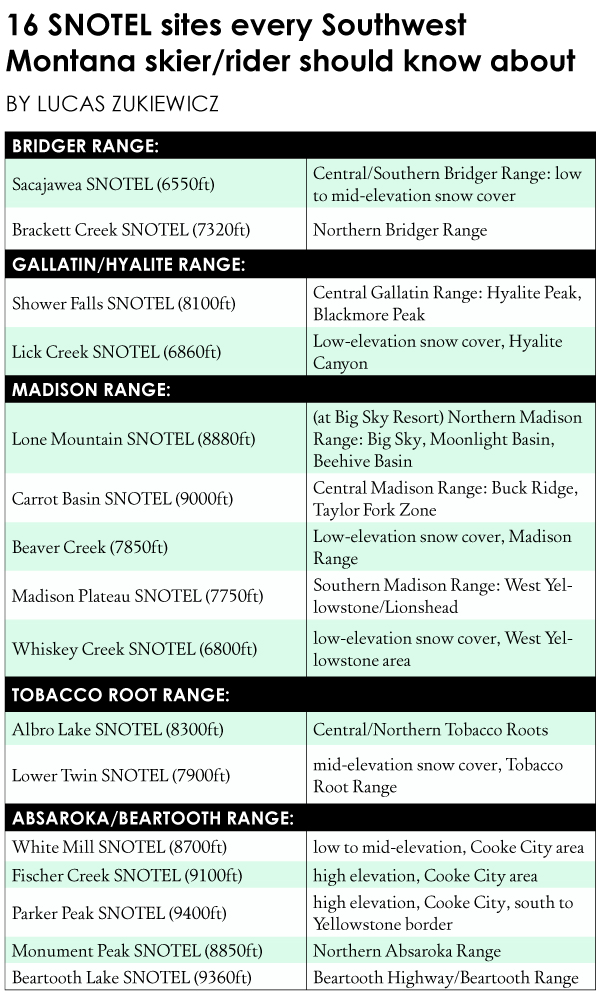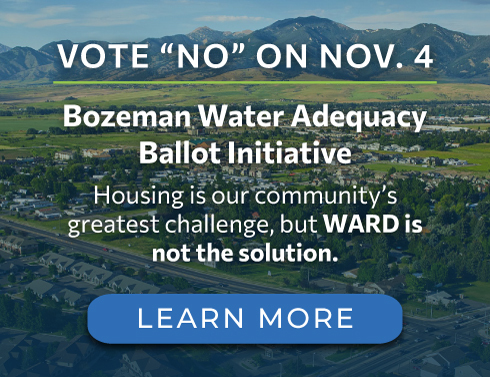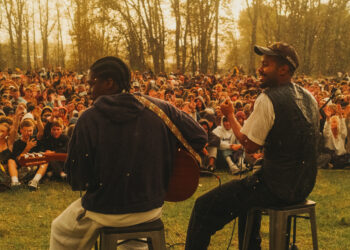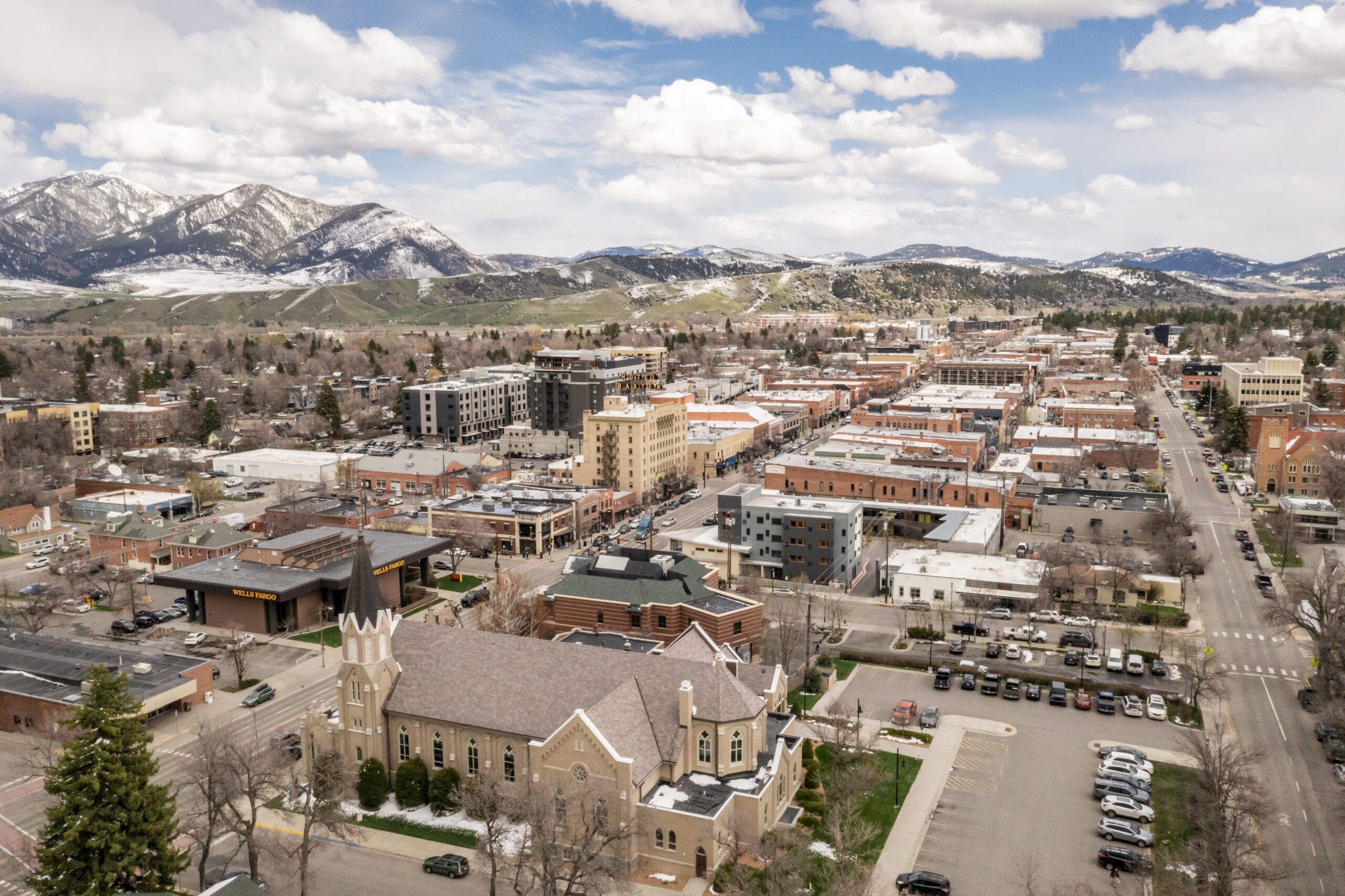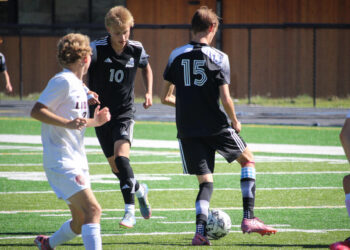BY EMILY STIFLER
Because 50-80 percent of the West’s
water supply comes as snow, informa-
tion about seasonal snowpack is key
for policy makers, water managers
and agricultural industries. Winter
snowfall also plays a major role in
backcountry recreation and tourism
in Montana.
In 1935, the Soil Conservation
Service (later to become the Natural
Resource Conservation Service or
the NRCS) created the Snow Sur-
vey and Water Supply Forecasting
Program to conduct snow surveys
and develop accurate and reliable
water supply forecasts. Today, as
part of these forecasts, the NRCS
operates over 750 automated snow-
pack telemetry stations, which col-
lect snowpack and climatic data in
remote high-mountain watersheds.
These stations, called SNOTEL
sites, operate in 13 Western states,
including Alaska. There are over 90
sites in Montana.
The program provides stream flow
forecasts for over 700 places in the
West and has a variety of users:
researchers, river and reservoir
managers, emergency managers for
natural disasters, recreational area
managers, power generation compa-
nies, farmers, ranchers, avalanche
forecasters and winter recreation-
alists. The data, as well as related
reports and forecasts, are available
to the public.
To communicate data in near real
time, SNOTEL uses meteor burst
communications technology, which
reflects VHF radio signals at a
steep angle off the band of ionized
meteors 50 to 75 miles above the
earth. The NRCS claims system
performance is above 99%. No satellites are involved. The remote sites
operate on batteries charged by solar cells, and maintenance requires hiking, snowmobiling, skiing, snowshoeing or helicopter access.
“SNOTEL is a great resource for backcountry skiers, ice climbers and general recreationalists,” says Bozeman-based NRCS Hydrologist Lucas Zukiewicz.
An avid backcountry skier, Zukiewicz checks a relevant site every time he goes out, and says it gives him an idea of what kind of weather, snow and avalanche conditions to look out for that day. He says while most recreational users log onto SNOTEL to look at snow depth, the sites offer much more for backcountry users, if you know how to interpret the data.
“You can tell how fast it’s loading, like if it’s puking several inches an hour, you can tell it’s getting pretty unstable.”
Zukiewicz says accessing the sites online is easy. Go to the Montana SNOTEL website (wcc.nrcs.usda.gov/snotel/Montana/montana), click on the location you want, then click on “daily snow depth data” in the table in the middle of the page. Basic SNOTEL stations provide the following:
– snow water content
– snow depth
– all-season precipitation accumulation
– air temperature with daily maximums, minimums and averages
– air temperature
– wind speed and direction
